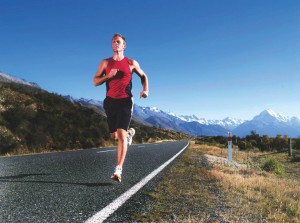Go Slower to Lean Up?
In running and walking, if you are like most people, your goal is to lose weight and gain fitness. If you go faster in running or walking will you actually lose more weight and gain fitness? A little bit of extra speed helps, but if you go “anaerobic” in the exercise workout, then your weight loss diminishes.
During exercise, like a long run, we use glucose or stored carbohydrates and fats. Glucose is the secondary source of long-term energy storage in our body (the primary energy stores being fats). At all times our body is using both glucose and fats for energy with the key being the right ratio. The science of marathon training is a good example of what to do because runners have now understood they need to increase their anaerobic or sprint capacity, then lean up with running distance with that new-found speed using primarily fat as fuel. Basically, you need carbohydrates when you perform intervals, and if aerobic training, like jogging or walking is done just below that sprint level, your body will use more and more fat as a fuel. One compliments the other.
Aerobic or cardio training should have moderate exertion over periods of up to 60 minutes which will increase fitness, decrease injury risk and actually burn more fat, resulting in better weight loss. While there is no ideal balance, a good place to start if these are your goals is with one interval session per week, and three steady-state or aerobic sessions as described.


